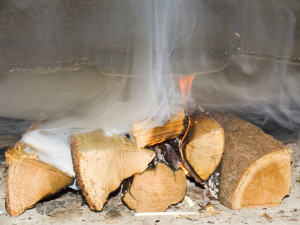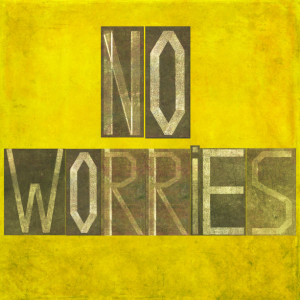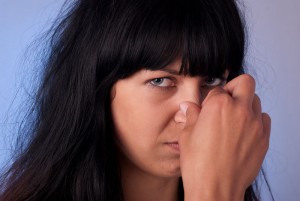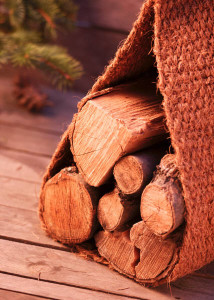Holy Smoke! My Fireplace is Smoking!
It’s one of those nice cool evenings when you just want to sit back and enjoy the warmth of your fireplace. You gather up the wood and get the fire started, but just as you’re getting comfortable a waft of smoke floats by your nose, and then more and more smoke is building up in your home. That definitely is not a good sign. Something is preventing your draft from working properly and smoke is escaping your fireplace.

If you notice smoke thickening in your fireplace and slowly spreading throughout your home, that’s not normal! Have it inspected to know what’s causing it.
Of course smoke should go up the chimney, not into the living area. That’s the very purpose of the chimney, to allow the harmful gases from combustion to exit the house not dwell in it. As you might have already figured out, your smoky fireplace might be an indication of an underlying problem.
Possible Causes
Moist Wood
The first thing that you can do by yourself is to check the kind of wood you are burning. Certain types of wood just naturally produce more smoke – the more moisture the wood contains, the more smoke (and production of creosote). That is why a drying process is necessary before using any kind of wood to burn in your fireplace.
Chimney Problems
Other more critical issues that could cause a smoking fireplace are chimney related, particularly pointing to the airflow, or the lack of it. When proper airflow is impaired smoke easily flows back into the house causing a lot of problems for homeowners, ranging from discolored furniture to severe health risks. That’s why you always want to make sure your fireplace and chimney are well-kept by having them inspected annually.
The most common impediment to proper chimney function is the presence of obstructions within the flue. These can come in the form of creosote buildup, dead leaves, and unusually, small animals. Creosote buildup is an inevitable occurrence with chimneys that are frequently used. Creosote is a normal byproduct of burning wood and over time it mounts up on the walls of the flue, narrowing the passageway of smoke as it tries to get out. This is the very reason why a regular chimney sweeping should be done because creosote is also very flammable and might even cause an unnecessary chimney fire. As for leaves and animals, having a chimney cap or crown installed will help you solve your troubles as it provides a barrier against these unwanted visitors inside your chimney. These accessories also hit two birds with one stone by complimenting the waterproofing of your chimney as well.
If you have a chimney damper installed, also make sure that it is still functioning properly. Otherwise, replace it because if it is always closed or will not open anymore, it defeats its purpose of controlling the amount of air flowing down to the fireplace. Instead it will be a trap for the rising smoke, which will have nowhere else to go but back down into the fireplace.
Whatever the reason for your fireplace and chimney woes, Chief Chimney Services, Inc. is ready to serve you. Contact us today for an inspection so we can help you determine the root of the problem. After which our licensed experts will do what they do best until your fireplace and chimney seem almost brand new. Soon you’ll be back having relaxing nights by your fireplace.








